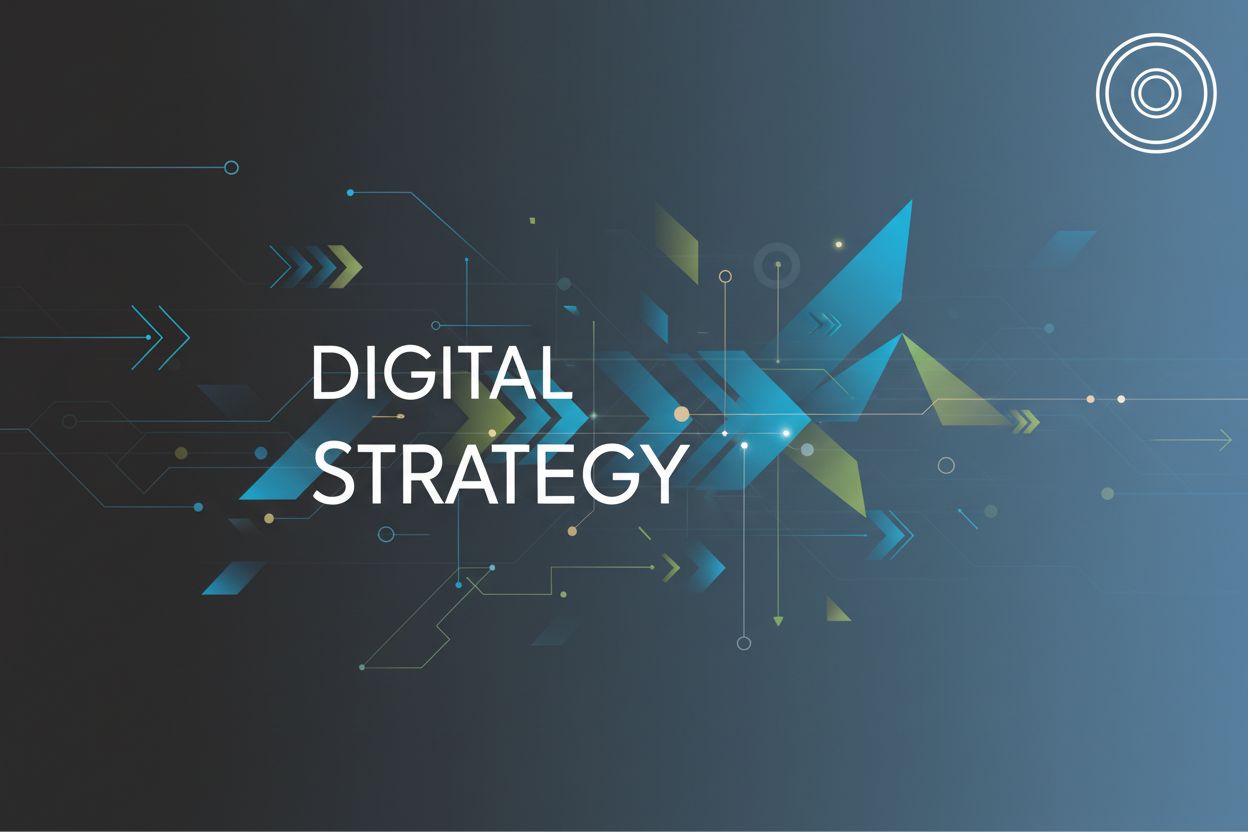Ultimate Guide to Digital Marketing Frameworks
TL;DR
Introduction: Why Digital Marketing Frameworks Matter?
Okay, let's dive into why digital marketing frameworks are actually important, and not just some fancy jargon. Ever feel like you're throwing spaghetti at the wall to see what sticks with your marketing? Yeah, frameworks can help with that.
- Digital marketing involves juggling, like, a million things at once. You've got social media, email, seo, paid ads...it's easy to get lost.
- Frameworks are basically your GPS. They give you structure so you don't drown in details.
- They make sure your efforts actually line up with what your business wants to achieve. For example, if your goal is to increase brand awareness, a content marketing framework can guide your strategy.
Think of this guide as a roadmap. We'll be covering:
- The main digital marketing frameworks out there, from the classic to the new kids on the block.
- How to pick the right one for your specific needs; not every framework is a one-size-fits-all.
- Tips on actually making these frameworks work for you, because knowing about them is only half the battle.
So, ready to make sense of the digital marketing wilderness? Let's get started.
Understanding Key Digital Marketing Frameworks
Alright, let's crack into some frameworks. Ever feel like you're just kinda guessing what'll work in your digital marketing? These frameworks, they're like cheat codes, sorta.
The RACE framework is a popular one. It stands for Reach, Act, Convert, and Engage. Smart Insights' Dr. Dave Chaffey developed it way back in 2010. It's all about planning and managing your digital marketing stuff in a structured way.
- Reach is all about getting your brand out there. Think seo, social media, paid ads - the whole shebang.
- Act is about getting people to actually, y'know, do something. Like, visit your website or follow you on social media.
- Convert is where the magic happens: turning those visitors into customers. Sales, leads, that kinda thing.
- Engage? That's keeping those customers happy and coming back for more. Loyalty programs, email marketing - keep 'em hooked!
It's designed to align with the classic marketing funnel. It makes sure you're hitting the right objectives at each stage. It's like a roadmap for turning strangers into raving fans!
The RACE framework empowers marketers to meticulously strategize and aptly oversee their digital marketing endeavours across four pivotal stages, as noted earlier.
It helps you set goals for each stage and pick the right tactics. Plus, it keeps your eye on the customer journey. It covers everything from when they first hear about you to when they're, like, your biggest cheerleader. No more spaghetti-on-the-wall marketing!
Next up, there's the AARRR framework, also known as the Pirate Metrics. It's all about Acquisition, Activation, Retention, Referral, and Revenue. It's like a treasure map for growth, arrgh!
- Acquisition is how you get new users. Ads, content, word-of-mouth – whatever brings 'em in!
- Activation is getting those users to actually use your product. A smooth onboarding process is key.
- Retention is keeping them coming back. Email, push notifications, making your product sticky.
- Referral is turning users into advocates. Make it easy for them to spread the word.
- Revenue is how you make money. Pricing, subscriptions, ads - gotta pay the bills, right?
And then there's the Flywheel Model. This one's all about keeping your customers happy and turning them into promoters. Instead of a linear funnel, it's a continuous cycle where happy customers fuel more customers. Think of it like a snowball rolling downhill – the more momentum it gets, the bigger it becomes. It's driven by delighting customers, which leads to referrals, which brings in new customers, who you then delight, and so on.
Now that we've explored some of the most popular frameworks, let's look at how to decide which one is the best fit for your specific business needs.
Choosing the Right Framework for Your Business
So, you're staring at a blank page, wondering which digital marketing framework is the one? It's like picking a puppy – adorable options, but which fits your lifestyle? Don't sweat it; we'll sniff out the right fit.
First things first, gotta figure out your business's goals. I mean, what are you really trying to achieve?
- Nail down your objectives: Are you hunting for leads, or just trying to become a household name? Be specific. If you're aiming to boost brand awareness, what does that actually look like? More social media followers? Increased website traffic? Got to define that, otherwise you are just shooting in the dark.
- Know your audience – really know them: Where do they hang out online? What makes them tick? Are they all about TikTok dances, or are they more into in-depth blog posts? Are they even online? Maybe they are still reading newspapers. Understand their behavior, or you’ll be talking to a brick wall, and that's never fun.
- Take stock of what you've got: What's your budget? What skills do your team members have? No use picking a fancy framework that needs skills you don’t even have. It's like buying a sports car when you can't even drive stick.
Okay, so you know what you want and who you’re talking to. Now, let's match frameworks to fit those objectives:
- RACE for the win: Need a comprehensive plan? RACE (Reach, Act, Convert, Engage) is your friend. It covers all the bases, and makes sure you aren't forgetting anything important. It's great for businesses looking to map out the entire customer journey from awareness to loyalty.
- AARRR for growth hackers: Got your eyes on rapid growth. The AARRR framework could help, which focuses on acquisition, activation, retention, referral, and revenue. This is often a favorite for startups and tech companies because it's so focused on user acquisition and monetization.
- Flywheel if you're customer-obsessed: Want to keep customers at the center of everything? The Flywheel model is all about that. It's perfect for businesses that thrive on customer loyalty and advocacy, where positive word-of-mouth is a major driver of growth.
Don't forget, different industries play by different rules.
- Industry-specific needs: A retail business might love AARRR for driving sales and repeat purchases, as it directly tracks revenue and customer lifetime value. On the other hand, a healthcare provider might focus on RACE to build trust and engagement through valuable content and clear communication, ensuring patients feel informed and cared for at every step.
- Market adaptation: A new framework might be amazing for a tech startup in a booming market, but a well-established framework is better for a traditional business in a stable market.
Choosing the right framework isn't a walk in the park, but with a little self-reflection and some careful consideration, you'll find one that fits just right. Next up, we'll be diving into some real-world examples.
Implementing and Optimizing Your Chosen Framework
Alright, so you've picked a framework. Now what? It's not gonna implement itself! Think of it like buying a fancy new grill - looks great in the box, but you gotta actually fire it up to get cooking.
First, break it down. Don't try to overhaul everything at once. Take the RACE framework, for example. Instead of tackling Reach, Act, Convert, and Engage all at the same time, focus on getting your "Reach" strategy solid first. For instance, to solidify 'Reach,' you might start by conducting thorough keyword research for your seo efforts, identifying key social media platforms where your audience is active, and then allocating a small budget for targeted paid ad campaigns to test different messaging. Once that's humming along, then move on to 'Act.'
- Assign responsibility. Who's in charge of what? Get specific. "Sarah handles social media, and John is on seo." No ambiguity.
- Set timelines. When do you want each stage completed? Be realistic, but don't let it drag on forever. A 90-day plan? Maybe. It all depends on your specific goals, but don't let scope creep take over.
- Track everything! Wrike's Digital Marketing Guide can help with this, they have great tools for tracking progress and keeping everyone aligned.
Implementing a framework isn't a one-time thing; it's a process. Think of it like tending a garden - gotta keep weeding and watering. Regularly review your results. What's working? What's flopping? Tweak as needed. Digital marketing is ever evolving, it's crucial to stay up-to-date with the latest trends.
Now that we've covered how to implement and optimize, let's see these frameworks in action with some real-world examples.
Case Studies: Frameworks in Action
Alright, let's see how these frameworks actually play out in the wild – not just in theory, ya know?
The RACE framework -- Reach, Act, Convert, Engage -- can seriously boost leads. Imagine a retail company using seo and social media to hit a wider audience (reach), then offering a discount code for signing up for their email list (act). Next, personalized emails push them to buy (convert), and finally, loyalty programs keep them coming back (engage). It's the whole cycle!
Startups can go wild with the AARRR "pirate metrics" framework. Think of a SaaS business that acquires users through targeted ads, gets them to use the core features during onboarding, sends reminder emails to keep ‘em hooked, asks happy users for referrals, and then offers different subscription tiers to make money. Simple, right?
To learn from these examples, ask yourself:
- What specific tactics were used at each stage of the framework?
- How did the business measure success for each stage?
- Could any of these tactics be adapted for your own business, even if you're using a different framework?
- What were the potential pain points for customers at each stage, and how were they addressed?
Conclusion: The Path to Digital Marketing Success
Alright, so you've absorbed a ton about these frameworks. Feeling a bit overwhelmed? Don't worry, you're not alone! Time to distill that knowledge into something actionable.
- Recap the frameworks: Remember the RACE framework (Reach, Act, Convert, Engage)? It's your all-in-one tool for planning each stage of the customer journey. Then there's the AARRR framework (Acquisition, Activation, Retention, Referral, and Revenue), which is great for startups laser-focused on growth. And don't forget the Flywheel model, which keeps customers at the heart of everything, driving continuous growth through delight and advocacy.
- Strategic Implementation is Key: It's not enough to know the frameworks, you've got to use them. That means setting clear goals, assigning responsibilities, and tracking your progress. As Wrike's Digital Marketing Guide points out, alignment is key.
- Value of Frameworks: Frameworks aren't just buzzwords; they're your roadmap to digital marketing success. They keep you focused, align your team, and help you measure what matters.
Digital marketing isn't about gut feelings; it's about data. You need to be constantly tracking metrics, analyzing results, and tweaking your strategy accordingly. And, of course, you gotta put the customer first.
- Data-Driven Decisions: Stop guessing and start knowing! Use analytics to see what's working and what's not.
- Customer-Centric Approach: Your customers are the heroes of the story. Understand their needs, anticipate their desires, and make their experience amazing.
- Long-Term Benefits: Data and customer focus aren't quick fixes; they're long-term investments.
So take this knowledge and get out there to make some magic happen.




